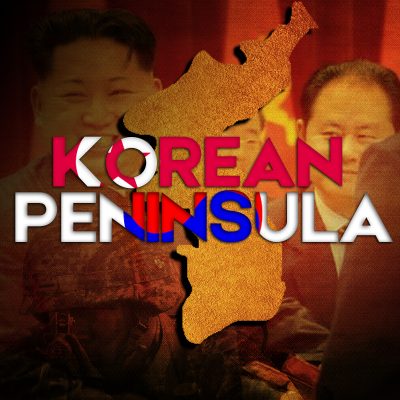Help produce more actual and interesting content, join our struggle by donating via PayPal: southfront@list.ru or via: http://southfront.org/donate/
The Korean Peninsula faced a new standoff between the North and South along the Demilitarized Zone conducting a complicated environment. On Aug. 20, North and South Korean forces exchanged fire across the inter-Korean border. The South has also raised its military readiness alert to its highest level, “Jindogae 1”.
The latest exchange comes as tension is high on the Korean Peninsula, following the maiming of two South Korean soldiers by a land mine on August 4 as they were conducting a patrol inside the South Korean half of the 4-kilometer-wide Demilitarized Zone, or DMZ, that separates the two countries. Seoul accused North Korea of infiltrating the DMZ and planting the mine. Also, the South Korea began anti-North propaganda broadcasts from a number of towers along the border.
The North Koreans have issued numerous statements over the past week regarding the start of the broadcasts and the ongoing annual joint Ulchi Freedom Guardian military exercise between the United States and the South. This year’s drills, that began on Aug. 17 and are slated to run through to Aug. 28, involve 50,000 South Korean soldiers and 30,000 of the US servicemen. Pyongyang views Ulchi Freedom Guardian as practice for an invasion of North Korea.
Despite the alert levels, however, it is possible that the situation will rapidly de-escalate, because both sides seek to practice restraint to avoid a larger conflict. On Saturday, the two Korean envoys began talks on the border crisis following tensions that saw an exchange of fire, a land mine explosion in the demilitarized border zone and S. Korea’s “propaganda broadcasts.” As result, N. Korea has admitted it “regrets” S. Korean soldiers’ injuries in landmine blasts that fueled the border conflict, as S. Korea has promised to halt its broadcasts into the north. North Korea has also reportedly pledged to end a “semi-state of war,” while South Korea will stop its border broadcasts at noon Tuesday if no abnormal situations occur in the near future. Koreas have also reportedly agreed to hold new talks in Seoul or Pyongyang as soon as possible.
However, unlike the March 2010 surprise sinking of the ROKS Cheonan, a South Korean navy corvette, and the November 2010 bombardment of Yeonpyeong Island, the current skirmishes are taking place along the DMZ. Preventing a major escalation is significantly more complicated along this strip, where the presence of two armies in close proximity raises the risk of the escalation.
The situation is further challenged by an aggressive South Korean stance supported by the US. According to Korean military sources the US has been considering to dispatch B-52 or a B-2 Spirit stealth bomber and a nuclear-powered submarine currently stationed at Japan’s Yokosuka naval base. In turn North Korea has deployed about 20 amphibious landing craft to the Northern Limit Line, the inter-Korean border in the Yellow Sea. Since the beginning of the standoff last week Pyongyang has doubled its artillery power and sent more than 50 North Korean submarines out for
operations. The US has previously dispatched its military assets to the peninsula to support Seoul in its stand-off with Pyongyang two years ago. In April 2013 it had flown B-2 stealth bombers.
Today, a significant role of solving the crisis in the Korean peninsula belongs to China. For it and Russia the escalation will mean arise of a new hot point around the borders. Amid the economical crisis and a destabilization of much key regions of the world, a new military conflict isn’t in interests of China and Russia. In this context, we should point out an aggressive policy of the USA and a militarist rhetoric of South Korea. Once again, the US and its allies use any case for attempts to conduct a military conflict in Eurasia.
Meanwhile the Korean conflict is still unresolved, the region periodically goes through high tension that occasionally result in bloody military collisions. Both sides are keen to avoid a full-scale destabilizing conflict, but with millions of troops facing each other across the DMZ, the risk of escalation is ever present. The current standoff could still rapidly dissipate, but it is important to remember that war is a persistent risk under these circumstances.




